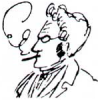There was a post here recently about (almost certainly faked) area lights in Deus Ex 3 that rekindled my interest in incorporating area lights into a real-time renderer.
The upcoming real-time global illumination methods should do this more or less for free (at least the good ones), so I doubt there's much need for specialized techniques, but -- well: I spend the last few days wasting my spare time with this stuff and I wanted to show off some pictures at least. ;)
Here are some screenshots and a little demo of what I got so far:








This is the demo.
It still has some problems, but overall I think it's ok. Some of the problems are:
- Too much dithering
- Boundaries between VPL clusters are visible
- Volumes get clamped too soon
- Window not resizeable
(It's my first ClickOnce installer, so I'm not sure it works correctly. Also: read the readme!)
For those interested in details, I implemented the following three techniques:
1. Place point light at closest point on light surface
Find closest point on light shape in shader and light as if a point light source was there.
- Need a fast way to find closest point
- Can be seriously off from a radiometric point of view, preserves only the rough shape of the reflection
- Ok for (mostly) diffuse surfaces, glossy surfaces reveal the fake quickly
- Ok for the narrow range of distances where a single point/ambient light is not yet usable and a 'real' area light is not necessary.
- Light must have single color
2. Precompute irradiance volume
Compute an irradiance volume 'around' the light, project irradiance into a low-order SH basis (I use just 2nd order), pack into 3d texture, look up in shader.
- Real area/volume light for diffuse surfaces (apart from visibility)
- Emitted Radiance can vary on surface / in volume (e.g. with texture)
- Hard to fake glossy reflection
- Limited interactivity (only rotation, translation, and scaling the intensity are straightforward)
3. VPL cluster
An Instant Radiosity like approach where you place many VPLs on the surface / in the volume of the light.
Do reduce shading costs these are clustered with some perceptual error metric (which I haven't found yet).
The shader then selects a cluster depending on the distance of the point being shaded.
- Basically all points from the irradiance volume technique, but
- It can handle glossy surfaces to some extent (but it quickly gets too expensive)
- Single VPLs can get visible on glossy or very close surfaces.
And finally I also have three questions:
Question1: Does anybody know a good (perceptual) metric for clustering VPLs?
Question2: Does anybody know a good way to fake a glossy reflection with an irradiance volume?
Question3: Has anybody ever bothered to support dynamic area lights in a game? Or is it generally considered not worth the effort?








